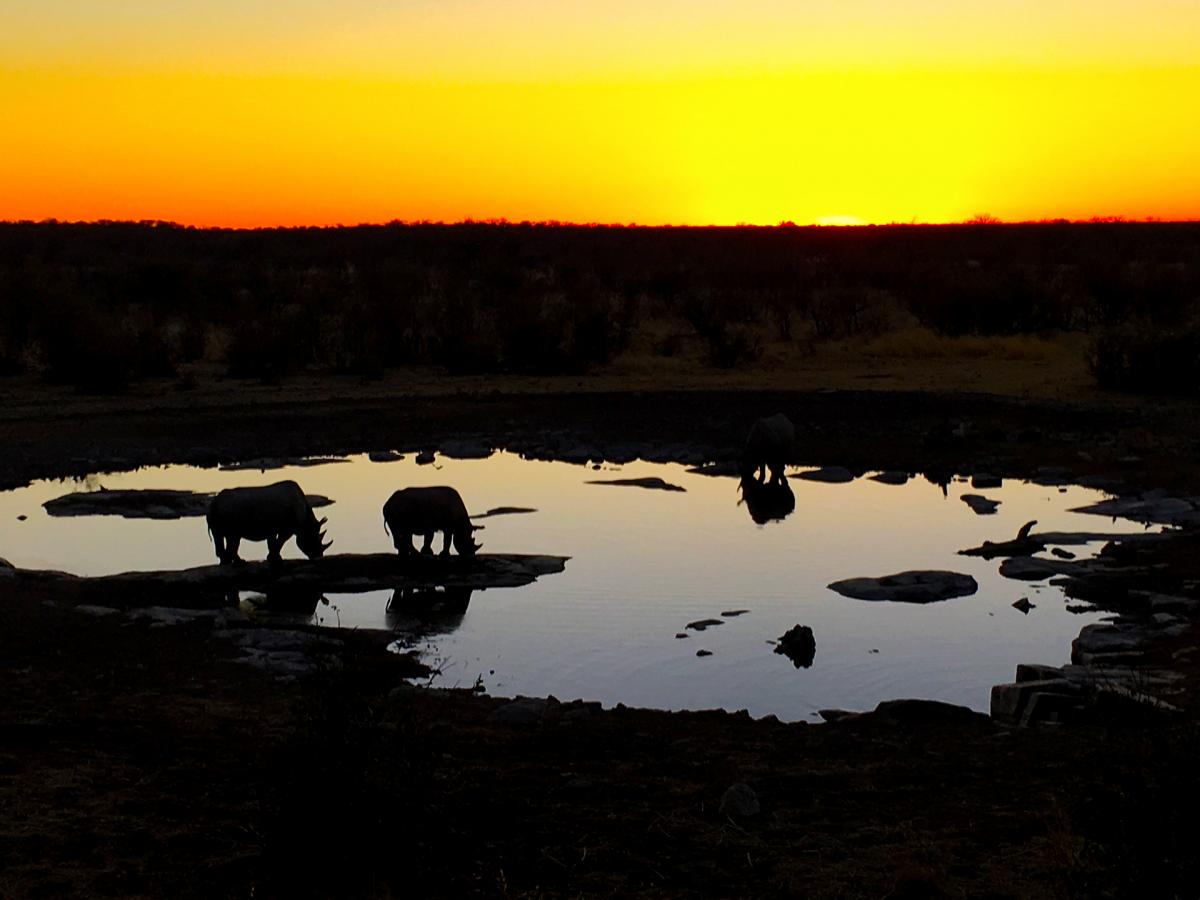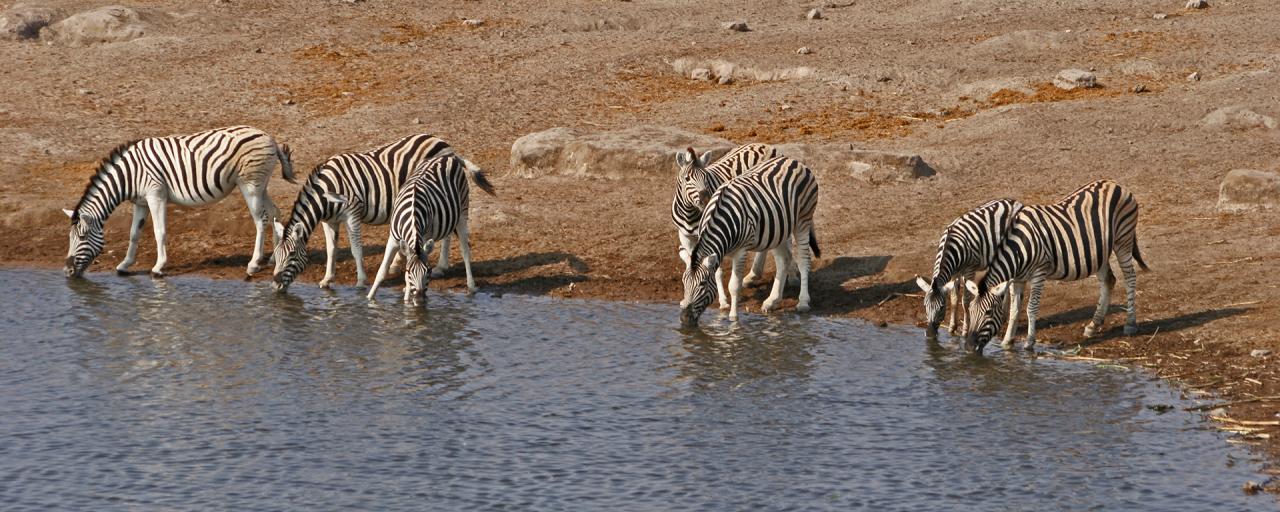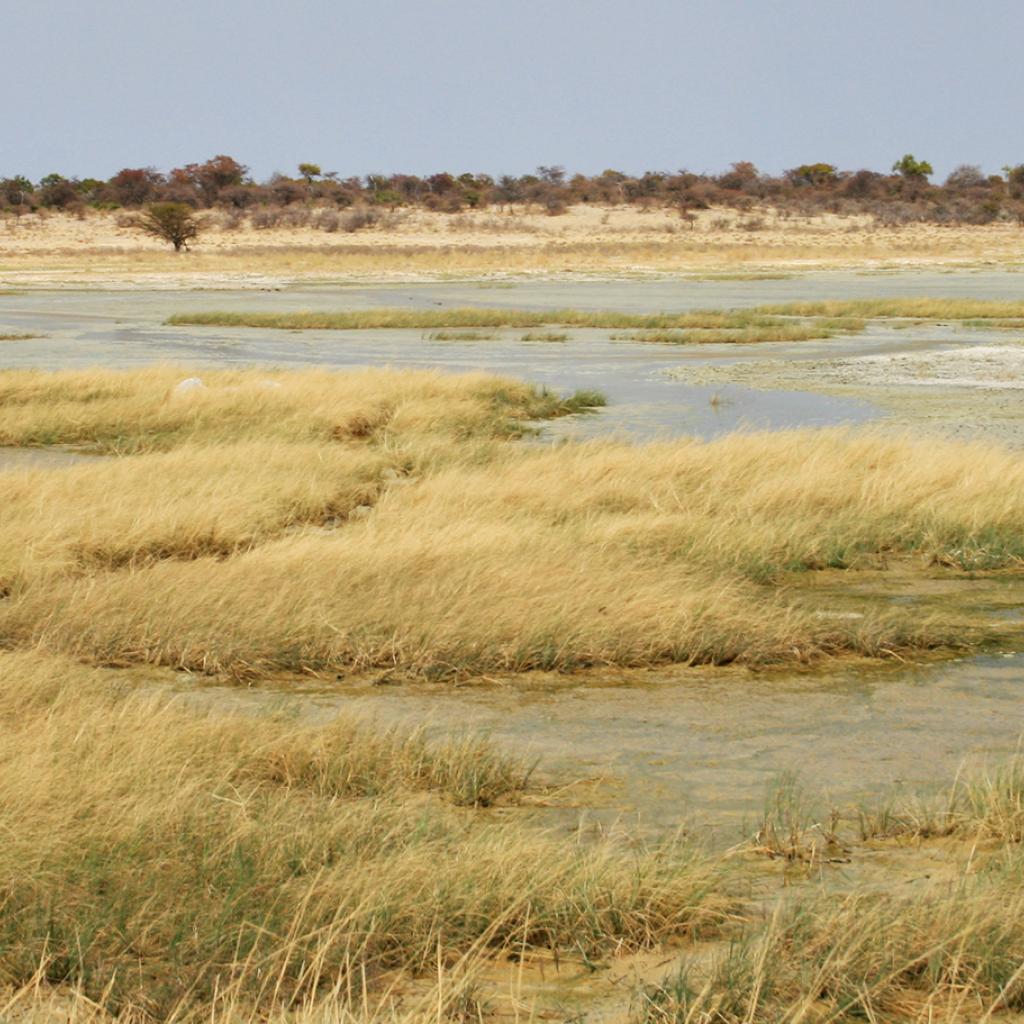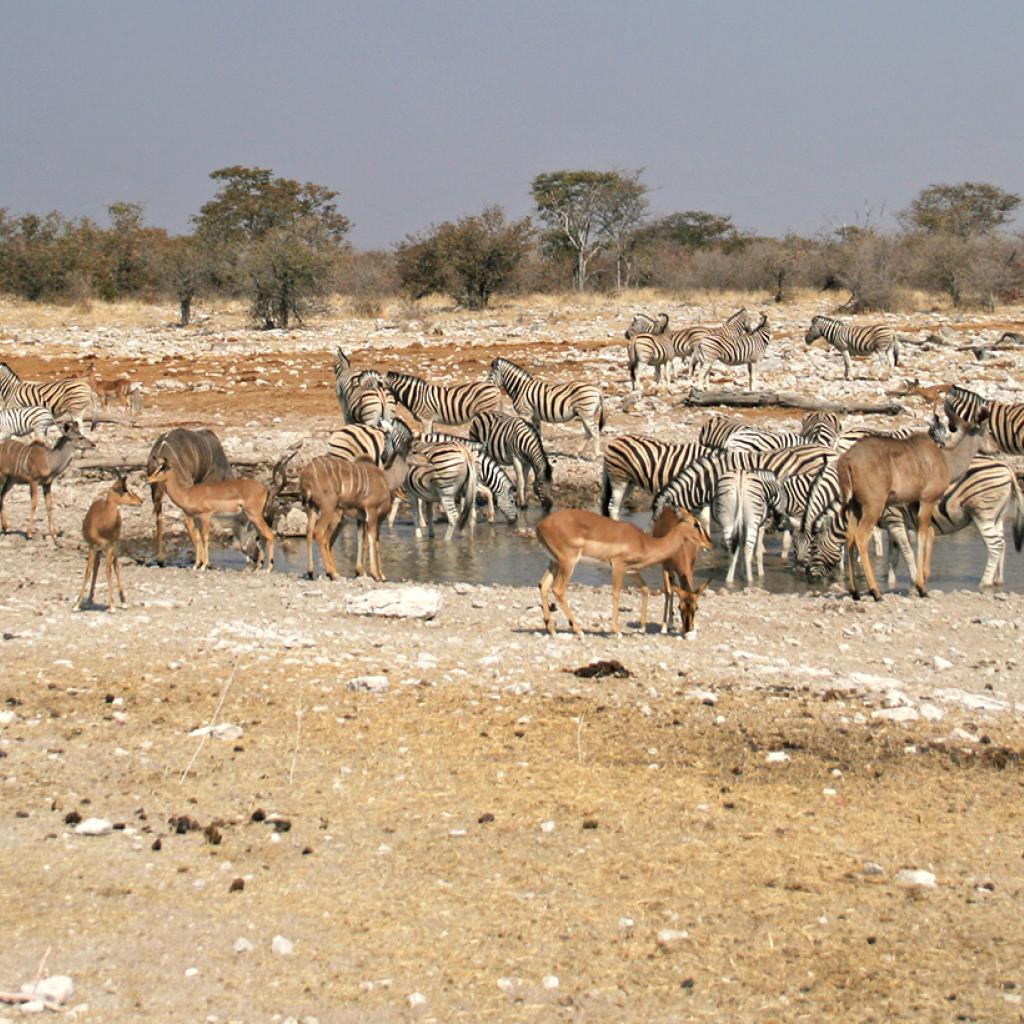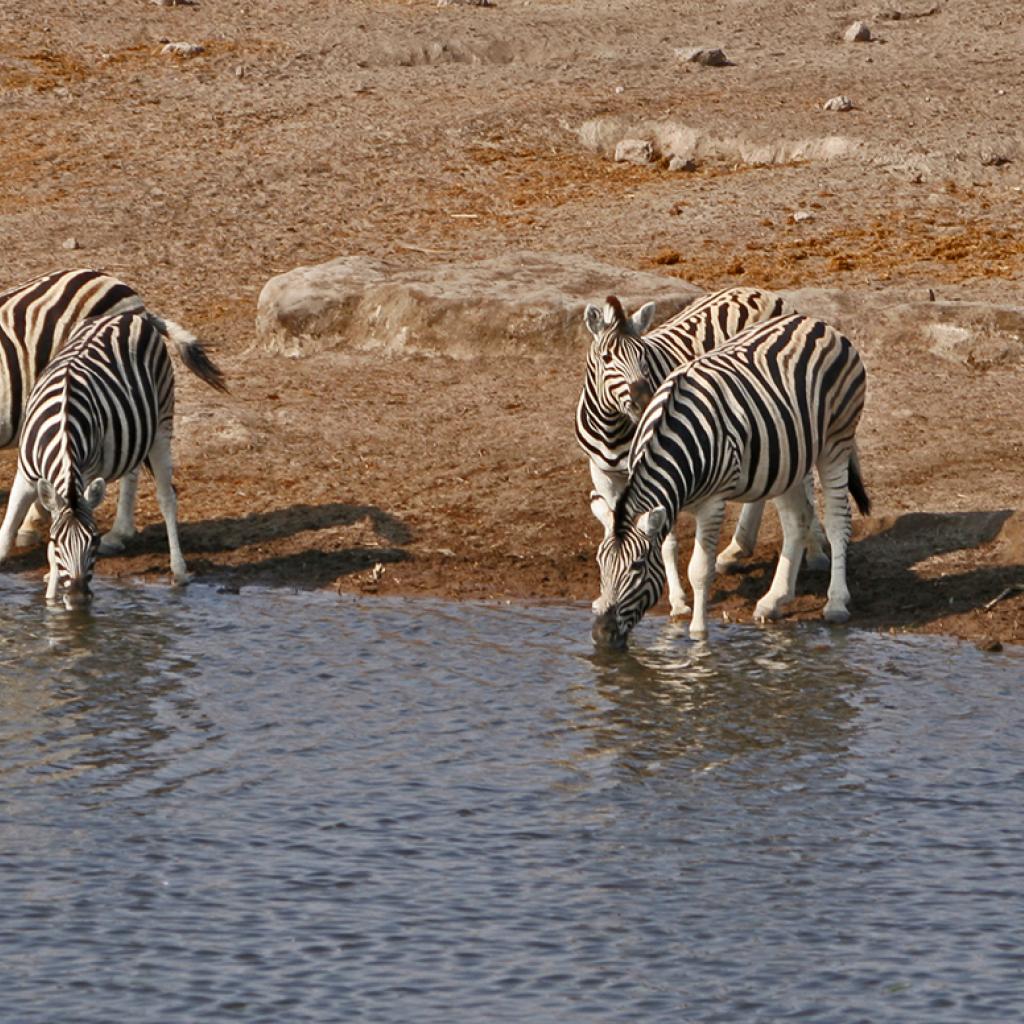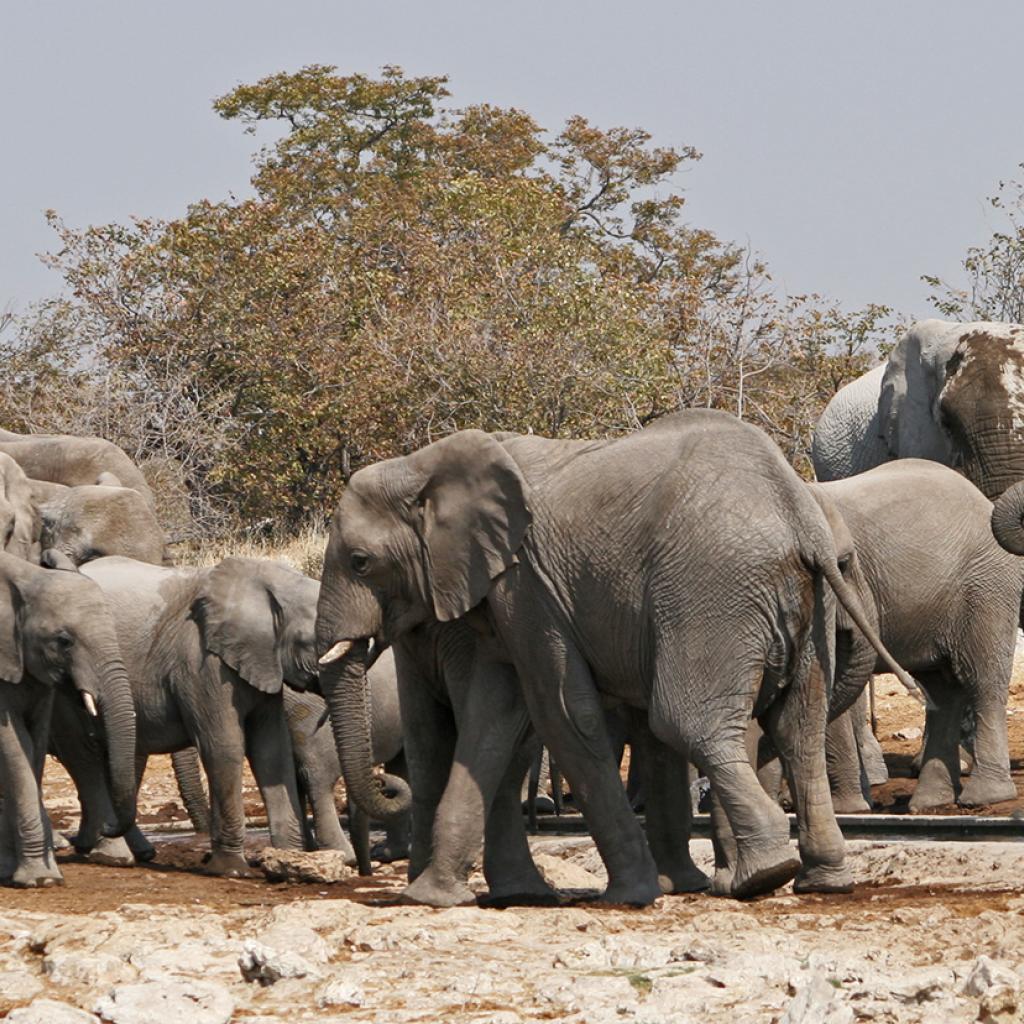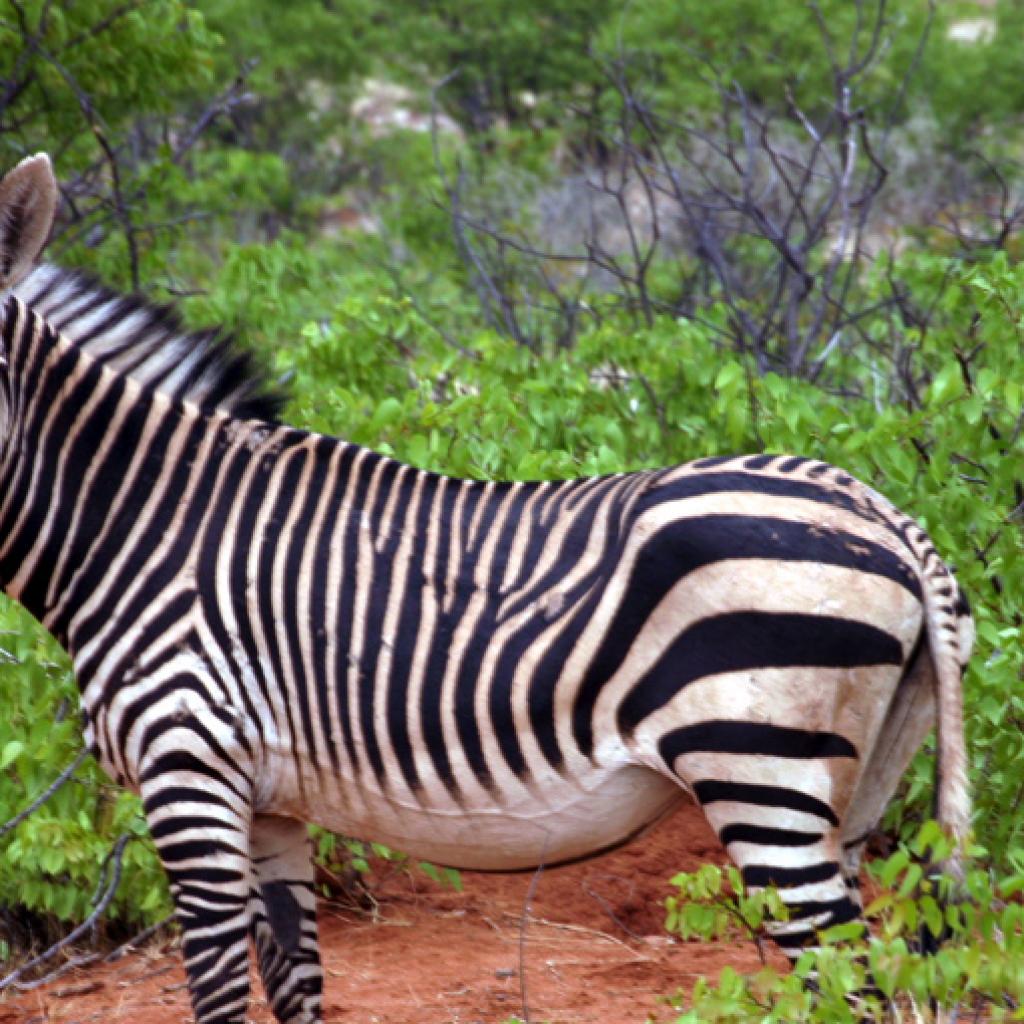The Halali Camp opened in 1967 and is located in the South of the Etosha National Park, about halfway between the Okaukuejo and the Namutoni; Halali in German means "end of the hunt" since this camp was built when hunting was over in this area and the era of natural safari began.
The Halali Camp offers several accommodation options and a range of services for travelers, including a restaurant, a gas station, a pool and a pool lit at night for the animal sightings, where there is a high probability of spotting leopards, especially during the night hours.
In the land close to the salty pan depression there is an area of savannah where, in the portion closer to the pan, very few forms of plant life survive, in practice only halophytes plants are able to live in these extreme conditions; while a bit more distant are acacia bushes and trees such as the Acacia nebrownii, the luederitzii Acacia, the Acacia mellifera, the Acacia tortilis, the Acacia reficiens and the Acacia hebeclada.
While in the Southernmost section, in the area South of Springbokfontain, there are the mopane forests that stretch up to Grunewald, in the Okaukuejo area.
The mopane or Colophospermum mopane, is the dominant plant in this area and is widespread throughout the South and Central Africa and it is loved by elephants; also home to the caterpillar of the mopane, that is nothing more than the larval stage of the Gonimbrasia belina moth, that is an important source of protein for local people.
This is also where the African Spyrostachys and Terminalia prunioides can be found.
In this area there are some low and squared hills of dolomite where different species of plants grow, including the fascinating moringa or "ghost trees", not to be confused with the baobab to which they resemble for the shape of the trunk and for the leafy part and differ instead for leaves, flowers and fruits.
Here there are also the Boscia albitrunca, the Acacia sieberiana and the Combretum apiculatum, also known by its German name of Kudubusch or koedoebos, that in Afrikaans means " kudus’ bush " as the kudus, like other antelopes, prefer the leaves while black rhinos feed on the branches and elephants instead prefer the bark.
Near the Halali there are 8 pools, including man-made and natural ones, where you can spot many animals who come here in search of water including leopards, lions, rhinos, elephants, zebras, wildebeests, black-faced impalas and several species of birds.
The natural source of Goas seems an oasis and it is one of the favorite places for birds, and therefore for birdwatchers, it is also a favorite place for elephants and black-faced impalas.
Etosha National Park areas.
- Pan area in the Etosha National Park
- Namutoni area in the Etosha National Park
- Halali area in the Etosha National Park
- Okaukuejo area in the Etosha National Park
- Western area of the Etosha National Park
